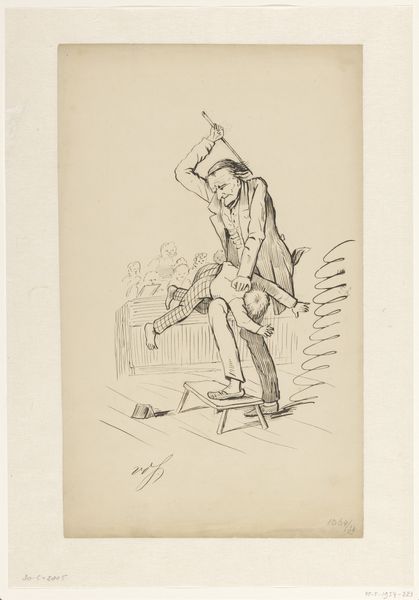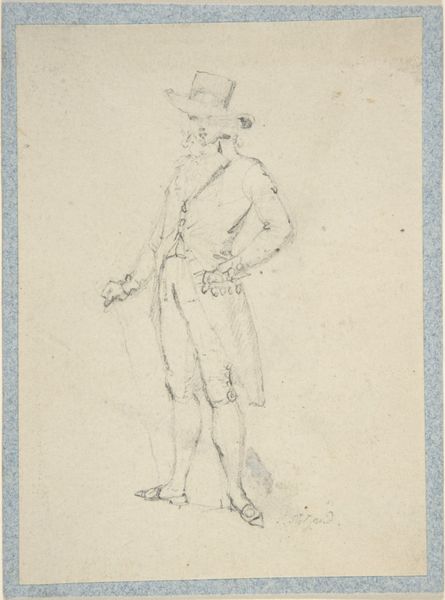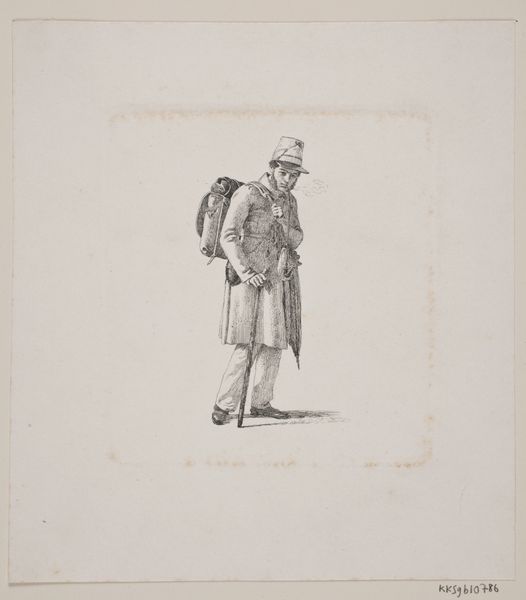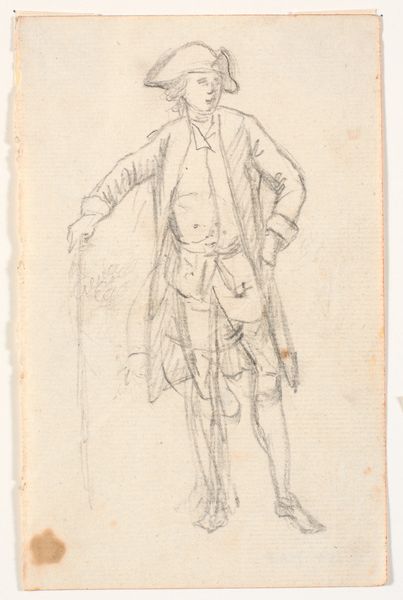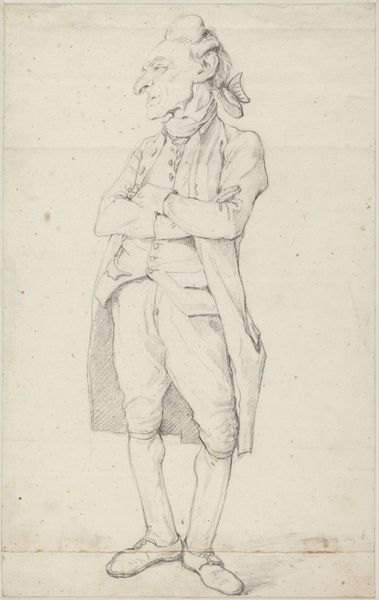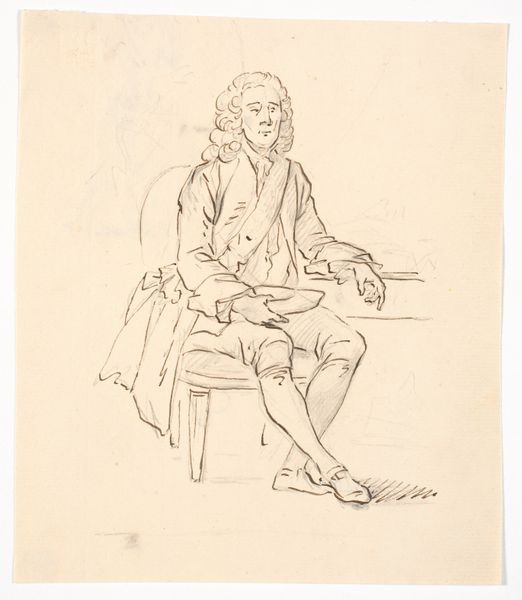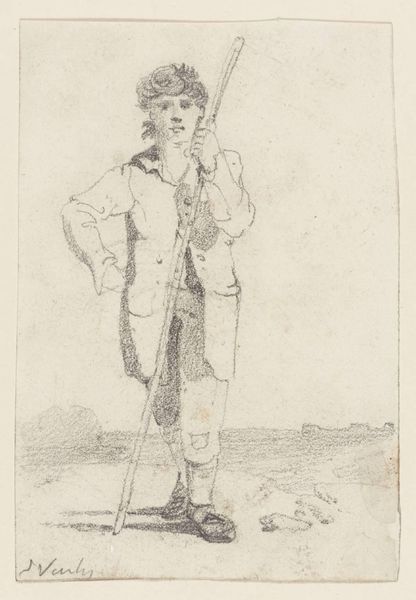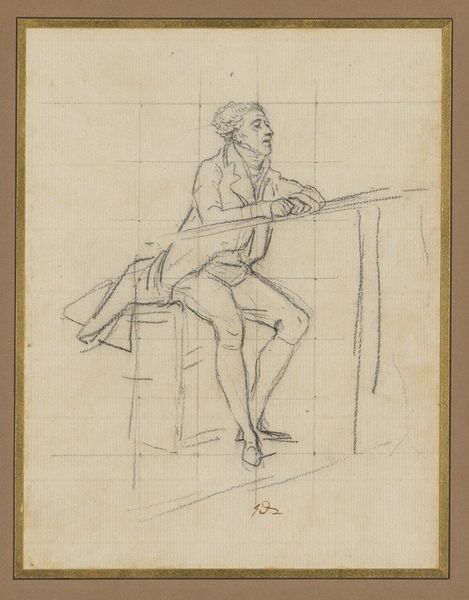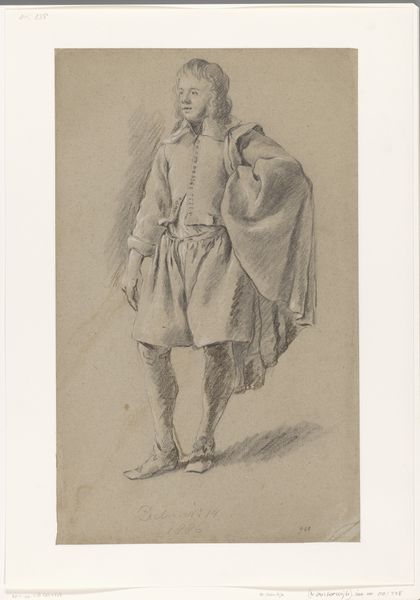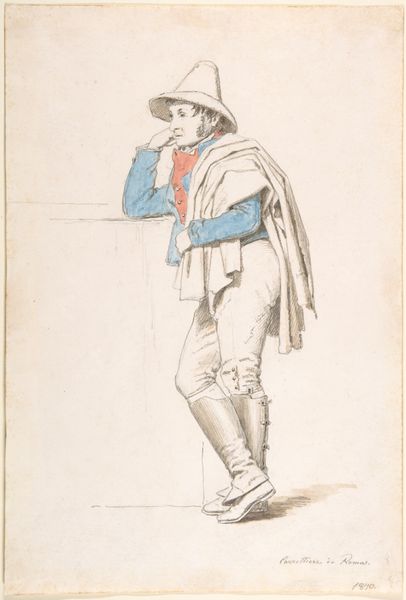
drawing, print, pencil
#
portrait
#
drawing
# print
#
pencil sketch
#
pencil
#
academic-art
#
realism
Dimensions: Overall: 8 15/16 x 6 3/4 in. (22.7 x 17.1 cm)
Copyright: Public Domain
Curator: George Du Maurier's pencil drawing, "Violinist: study from life," likely created between 1850 and 1900, catches my eye. It's currently housed here at the Metropolitan Museum of Art. Editor: The man in the drawing has a melancholic expression that I find moving. I wonder what tunes weigh on his mind. It feels intimate, like we're interrupting his rehearsal. Curator: Absolutely, and that's exactly why this piece is so special. It's just a quick sketch on paper, but it conveys so much depth and insight into the subject. The pencil work is remarkably detailed in his face, clothes and posture, but quite hasty and vague when rendering the chair he is sitting on. Editor: It makes you think, what does this instrument, which is carefully depicted, represent to him? In folklore, music holds the power to tame even the wildest of beasts, or summon spirits. Perhaps he’s wrestling with his own demons. Curator: Perhaps. I read something about musicians who felt like the instruments themselves were imbued with personality. You pour your soul into these objects daily to convey messages or play music. Editor: Or, maybe, he's simply tired after a long practice! I see echoes of social expectations in his dress – a buttoned-up shirt, formal boots – suggesting constraints maybe at odds with the artistic soul trying to break free through the violin. Curator: A push and pull between societal expectations and raw self-expression is what the creative life is, wouldn’t you say? In any case, his drawing has a real, lived-in feeling about it. A glimpse into a quiet moment in a musician’s life, made permanent by Du Maurier's skilled hand. Editor: Yes, a wonderful, fleeting snapshot, pregnant with implications. This piece highlights, if nothing else, how we try to make sense of life using visual symbolism.
Comments
No comments
Be the first to comment and join the conversation on the ultimate creative platform.

